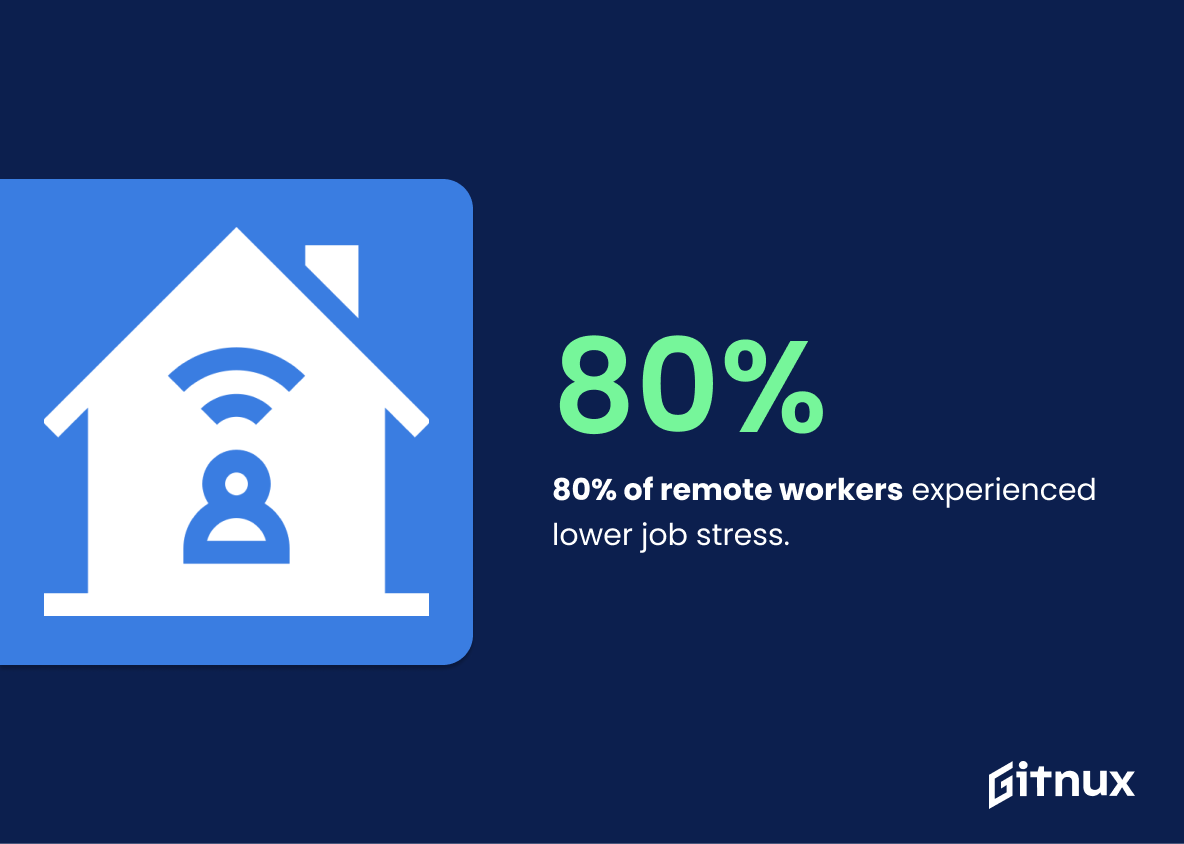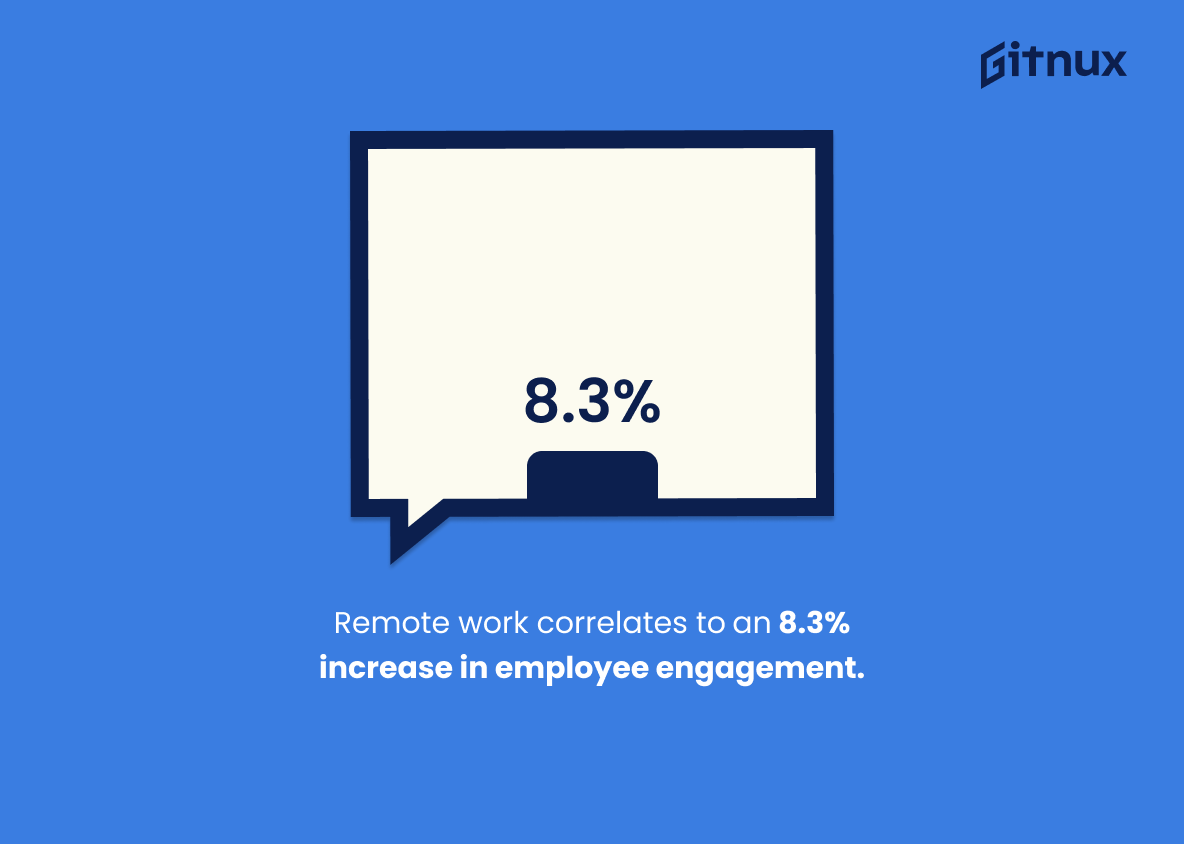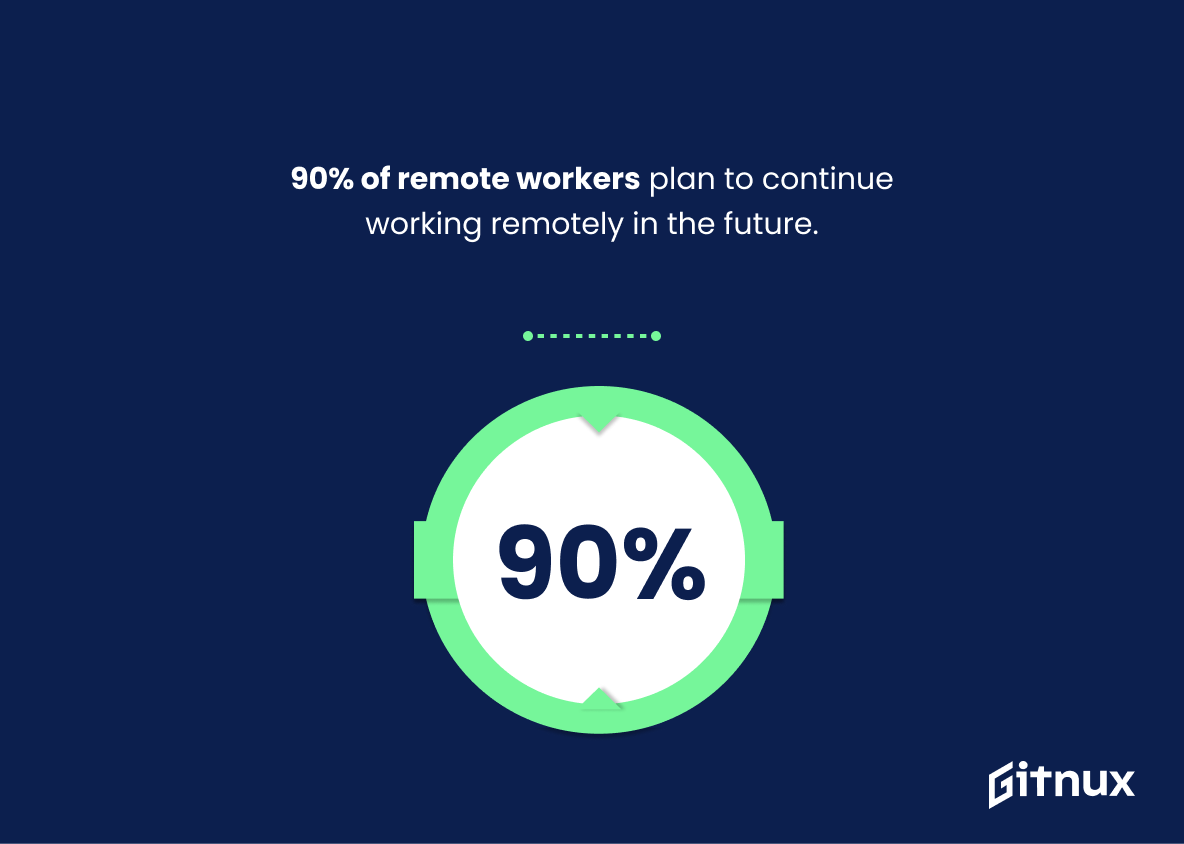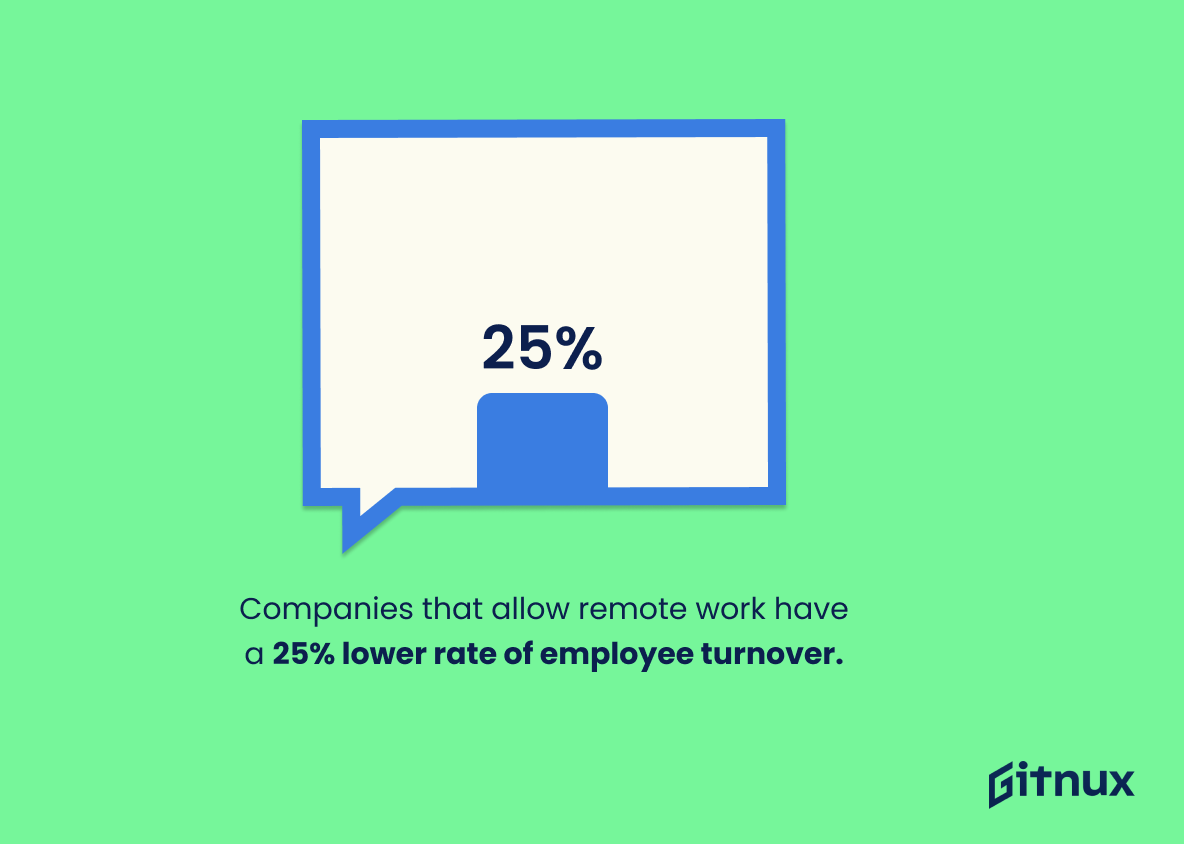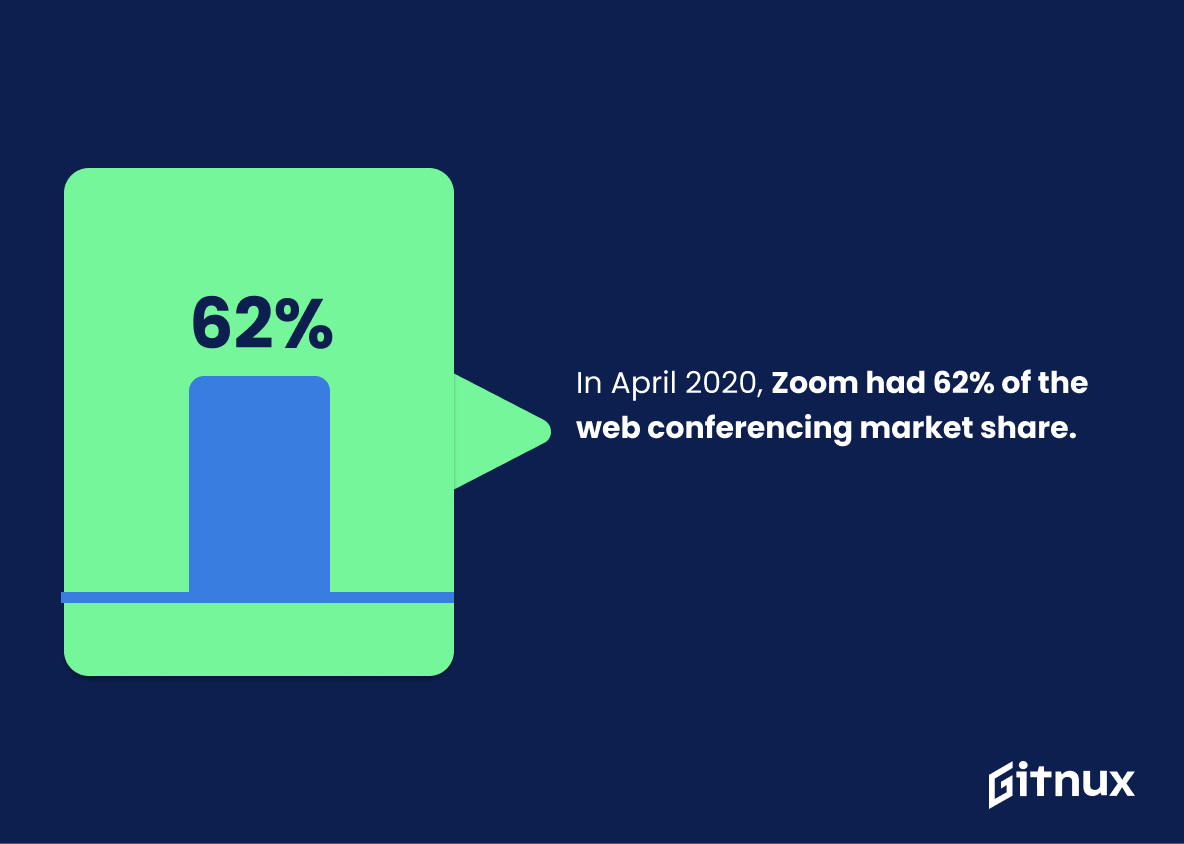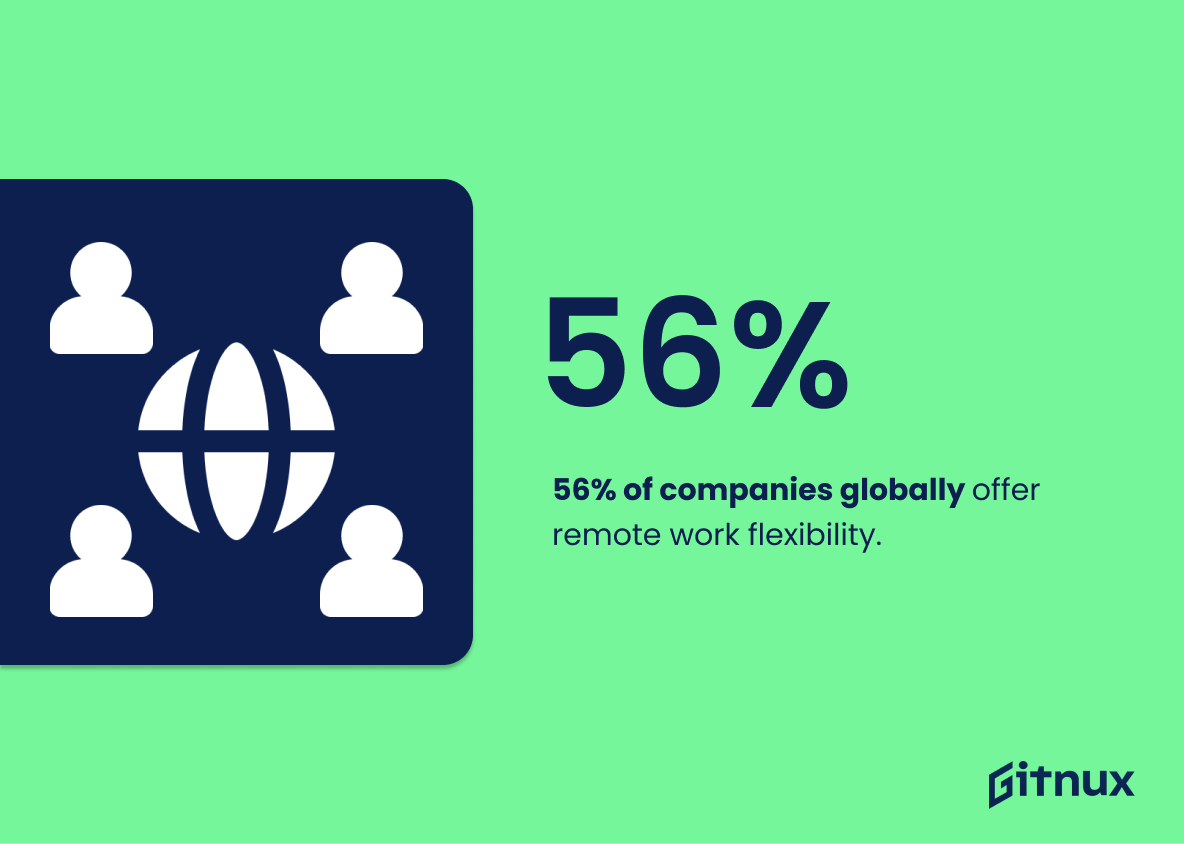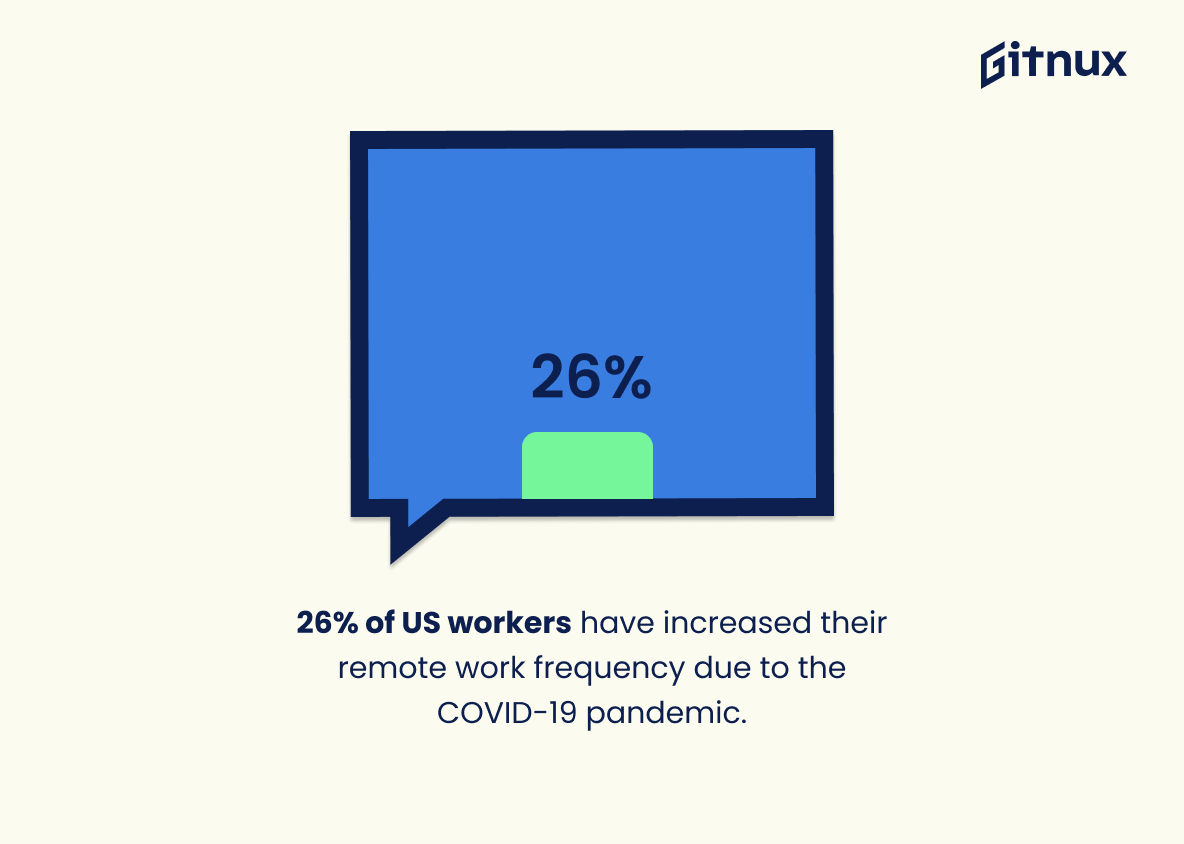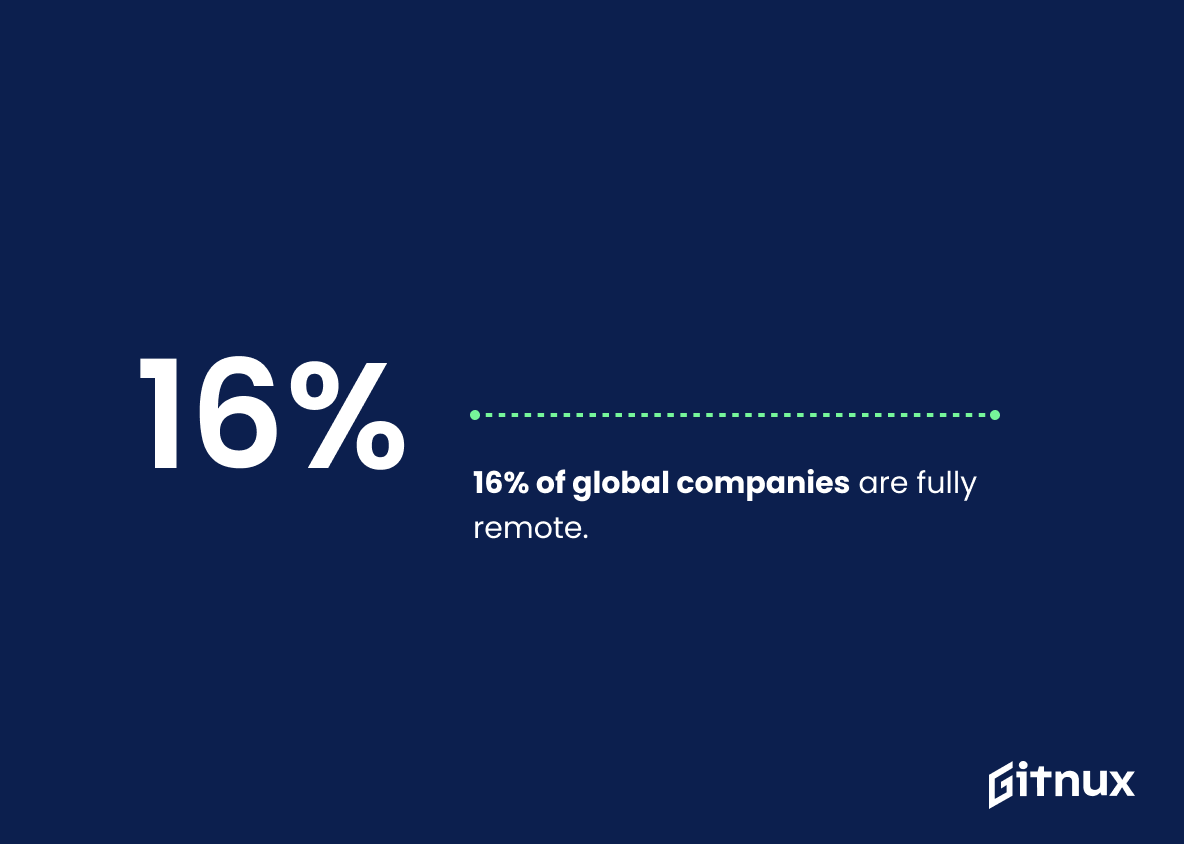Since the start of the global pandemic, we have all witnessed a massive increase in remote work possibilities. Even the companies, that were not ready to implement this style of working, had no other choice but to do so and join the new trend. And, thanks to technologies, adaptation to the new reality went very smoothly.
Plenty of employees around the world had their remote work experience during the Covid outbreak, and now they want to have the advantage of working from home and having flexible schedules even more. Remote work positions are in high demand on job-searching platforms right now.
If you are a manager thinking of implementing remote work policies in your company, or you are a person looking for remote opportunities for yourself, it’s always useful to see the new trends and numbers. It will help you to have a better understanding of the situation in the job market. Let’s discover the new remote work and work-at-home statistics and trends together!
Check out our latest Work From Home Productivity Statistics
Remote Work: The Most Important Statistics
90% of employees are as productive, or more, working remotely when compared to the office. 84% feel happier when working remotely.
97% of people working remotely would recommend remote work to others. The majority of remote workers are genuinely satisfied and happy with their working arrangements.
89% of companies have already introduced a remote working policy or are currently considering one.
Useful statistics on remote work
According to LinkedIn data, remote work options grew by more than 1100% between March 2020 and the end of 2021.
85% of managers believe that teams with remote workers will become the new norm in the business world.
According to Owl Labs report, 16% of companies worldwide are fully remote. And even though it’s still a low number, the fact that these companies don’t have offices and work 100% remotely shows us how much remote work has grown and expanded around the world. The same report says, that 44% of companies do not allow remote work at all.
Another study by Owl Labs discovered that nearly 70% of full-time US workers have worked remotely during the pandemic, and many still do so.
Working remotely saves employees around 40 minutes daily on commute.
The latest study, made by ResearchGate, estimates that by 2025 70% of the workforce will work remotely at least five days a month.
How many people prefer to work remotely?
Over 2000 employees were surveyed by Owl Labs to learn more about the current state of remote work and what lies ahead. 70% want a hybrid or remote working style after the pandemic is completely over. 3 in 4 (74%) said that working from home is better for their mental health. Only 36% of people believe the office is best suited for individual work.
Owl Labs also has discovered, that 74% of employees surveyed would be less likely to leave their company if offered a remote work option.
PwC’s study confirms employees’ high interest in working remotely: 55% of participants would prefer to be remote for at least three days a week.
Are remote workers happier?
90% of employees, surveyed by Owl Labs, are as productive, or more, working remotely when compared to the office. 84% of employees also shared that working remotely would make them happier, with many even willing to take a pay cut.
Impressive statistics, provided by Buffer, show us an overwhelming and clear picture of employees’ preferences regarding the work environment. 97% of people working remotely would recommend remote work to others. The majority of remote workers are genuinely satisfied and happy with their working arrangements.
Another study found that the ability to work remotely increases employee happiness by 20%.
Are people more productive when working at home?
According to the Mexico Autonomous Institute of Technology, Bloom, and Chicago Booth’s survey, nearly 6 out of 10 workers reported being more productive working from home than they expected to be, compared with 14% who said they got less done. On average, respondents’ productivity at home was 7% higher than they expected. 40% of workers reported they were more productive at home during the pandemic than they had been when in the office, and only 15% said the opposite was true.
Becker Friedman Institute has studied the changes in employees’ productivity before and during working from home. It conveys that employees with children at home have a greater decline in productivity than those without.
What are the benefits of working remotely?
Big research was done by Capgemini Research Institute, which surveyed more than 500 organizations from various sectors around the world, featuring 5,000 employee responses. According to their study, 88% of organizations agree that they have realized real-estate cost savings with remote working in the last few months, and 92% expect savings in the next two to three years.
Another study revealed the main factors which make remote work preferable to many people. 34% of respondents feel that remote work makes them feel safer, and 32% find having a better quality of life working remotely. 31% of interviewers sense more freedom to take more productive breaks from work when needed.
Read more about the Benefits Of Remote Work
From skipping lunch out to not having to commute, remote workers save money. FlexJobs estimates that people who work from home save, on average, $4,000 a year.
What are the drawbacks of remote work?
In a survey, conducted by Statista in Italy, 67% of respondents stated that having fewer chances to socialize with colleagues was the main disadvantage of working from home.
Microsoft carried out research among their own employees and discovered that cross-group collaboration decreased by nearly 25% (compared to on-site work), with teams becoming more sequestered and isolated.
According to Buffer’s report, the three biggest struggles associated with remote work are: not being able to unplug after work (27%), loneliness (16%) and difficulties with collaboration and communication (16%).
Remote work research, conducted in Romania, discovered that extra working hours are not always adequately compensated by employers: 44% of public administration employees surveyed considered that monitoring of remote work did not adequately capture the real volume/complexity of the work undertaken. Another negative impact of remote work on employees, according to the study, is an increase in personal costs: electricity, internet costs, etc. as they are not always compensated by employers.
Remote work and environmental impact
Working from home 4 days a week would reduce the amount of nitrogen dioxide, which is the main pollutant generated by traffic emissions, by around 10%. Even the lower levels of home working seen as workplaces have opened up again would still generate a reduction in air pollution of around 8%.
Another study discovered, that remote workers save 247 trillion sheets of paper every year (by using digital documents, management systems, and e-signatures). Also, in 2020 due to employees working from home, there was a 67% decrease in waste production for businesses.
Do people want to go back to the on-site work scheme?
Flexjobs surveyed more than 4,000 people about remote working. 65% of respondents want to become full-time remote employees, while 31% prefer hybrid arrangements, with some days in the office and some days working remotely.
Cisco Systems surveyed 10,000 people across 12 markets in Europe, the Middle East and Russia. 87% of participants want the ability to choose where, how and when they work.
A survey, conducted by Owl Labs, revealed that 70% of respondents want a hybrid or remote working style. 38% would be willing to take a 5% pay cut to work remotely at least part-time. Only 36% of people believe the office is best suited for individual work.
What are the main perspectives on remote working?
According to Upwork Future Workforce Report, the expected growth rate of full-time remote work over the next 5 years has doubled, from 30% to 65%. Remote work has risen rapidly as a result of the pandemic, with more than half of the American workforce currently working from home. 56% of hiring managers feel that the shift to remote work has gone better than expected, while only 1 in 10 feel it has gone worse than expected.
Researchers from Ladders have been carefully tracking remote work availability from North America’s largest 50,000 employers. Remote opportunities leapt from under 4% of all high-paying jobs before the pandemic to about 9% at the end of 2020, and to more than 15% today. They believe, that 25% of all professional jobs in North America will be remote by the end of 2022, and remote opportunities will continue to increase through 2023.
More than 530 companies were asked by KPMG about their current remote working considerations and decisions in the context of a global webcast. 89% of companies have already introduced a remote working policy or are currently considering one. 52% are currently considering implementing a remote working policy, while 37% have already introduced one. The numbers reveal that the vast majority are pursuing a long-term strategy for remote working.
Conclusion
Some might not like it, but remote work is here to stay, and the latest statistics are proof of it. The majority of employees see more benefits in it and are even ready to leave their current jobs if they won’t be given an opportunity to work at home or be on the hybrid scheme.
There will always be people who prefer to work in an office or those who physically cannot work remotely in connection with their job industry (health, food, construction etc.). But with technologies getting more advanced and more products being developed for remote teams, it gets really popular around the world and gives endless benefits to both teams and employers.
References:
Forbes: “Global Talent Trends”, cited in January 2023 (Source).
Findstack: “The Ultimate List Of Remote Work Statistics for 2023”, cited in January 2023 (Source).
Owl Labs: “2018 Global State of Remote Work”, cited in January 2023 (Source).
ResearchGate: “Challenges and Perspectives for Remote Work January 2022”, cited in January 2023 (Source).
Owl Labs: “State of Remote Work 2021”, cited in January 2023 (Source).
Owl Labs: “State of Remote Work 2020”, cited in January 2023 (Source).
PwC: “It’s time to reimagine where and how work will get done”, cited in January 2023 (Source).
Buffer: “2022 State Of Remote Work”, cited in January 2023 (Source).
Tracking Happiness: “Remote Work is Linked to Happiness: Study of 12,455 Respondents”, cited in January 2023 (Source).
Chicago Booth: “Are We Really More Productive Working from Home?”, cited in January 2023 (Source).
Becker Friedman Institute: “Work from Home & Productivity: Evidence from Personnel & Analytics Data on ITProfessionals”, cited in January 2023 (Source).
Consultancy EU: “Remote working can slash operational costs by one third”, cited in January 2023 (Source).
Accenture: “The Future of Work: Productive anywhere”, cited in January 2023 (Source).
FlexJobs: “Remote Work Statistics & Trends: The Latest in Remote Work”, cited in January 2023 (Source).
Statista: “Perceived disadvantages of working from home in Italy as of 2020”, cited in January 2023 (Source).
Microsoft: “The effects of remote work on collaboration among information workers”, cited in January 2023 (Source).
Buffer: “State Of Remote Work 2021”, cited in January 2023 (Source).
Catalyst: “Present & Future of Remote Work in Romania. Need-to-know Stats”, cited in January 2023 (Source).
Nature: “A take-home message from COVID-19 on urban air pollution reduction through mobility limitations and teleworking”, cited in January 2023 (Source).
Alliance: “Work from Home Models Predicted to Cause 34.3 Million Tons of Greenhouse Gas Emissions”, cited in January 2023 (Source).
Cisco Systems: “A new perspective on the modern workplace”, cited in January 2023 (Source).
Upwork: “The Future of Remote Work”, cited in January 2023 (Source).
Ladders: “25% of all professional jobs in North America will be remote by end of next year” cited in January 2023 (Source).
KPMG: “Current trends in remote working” cited in January 2023 (Source).
ZipDo, cited June 2023: Remote Work Statistics
